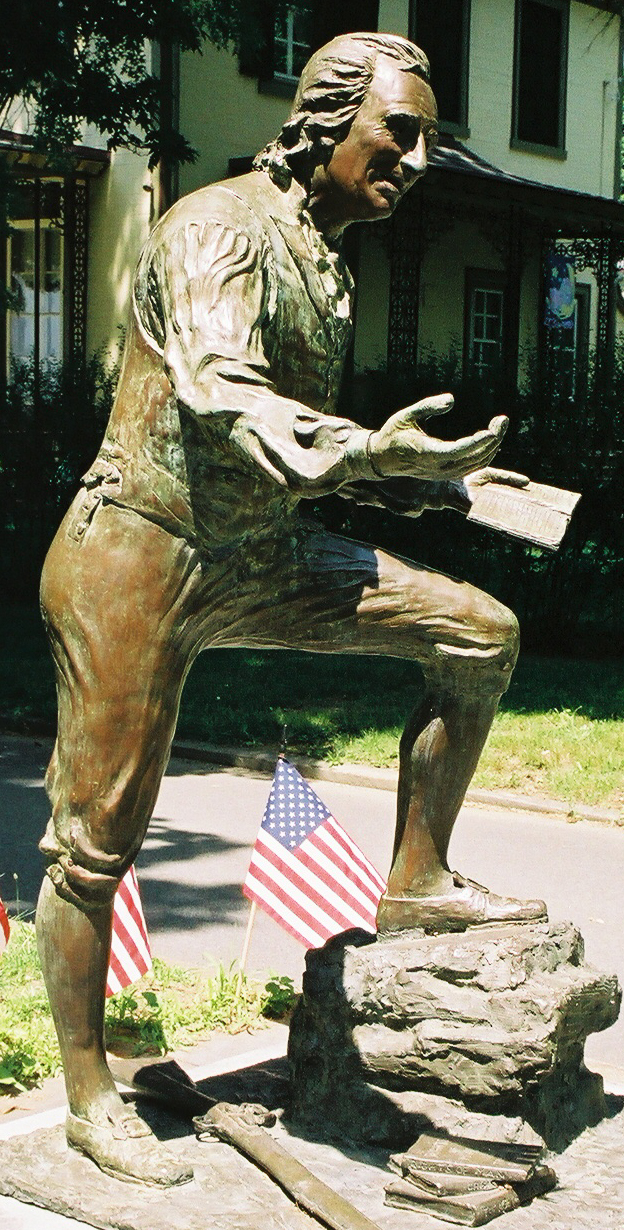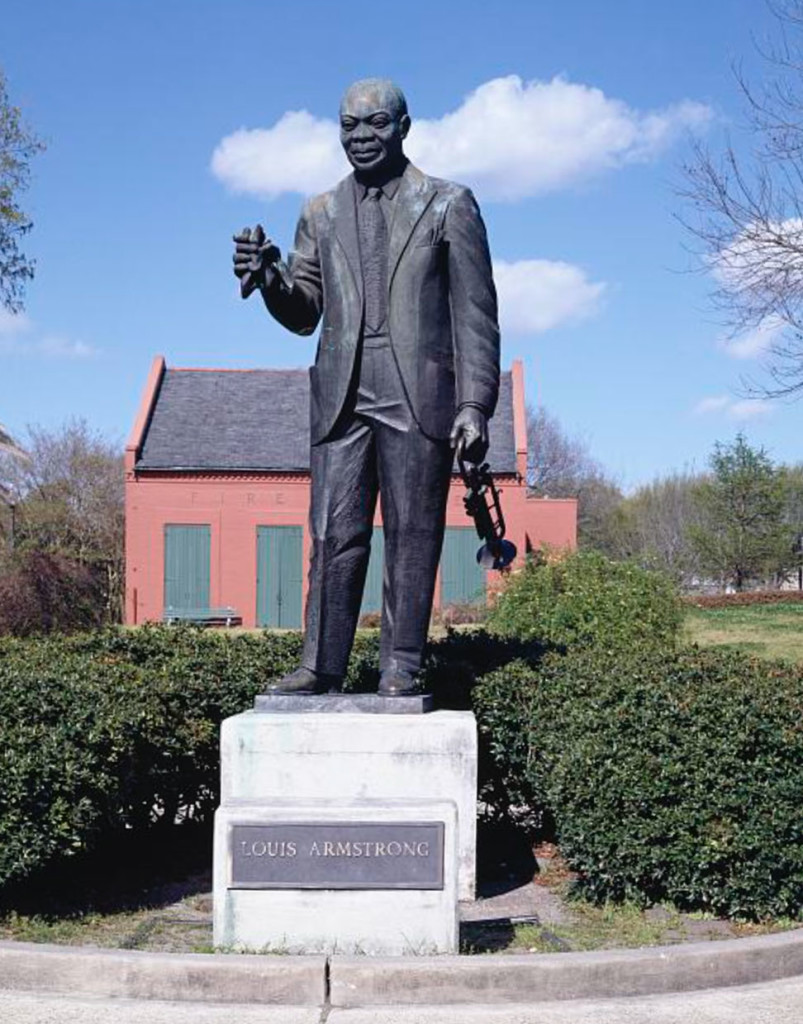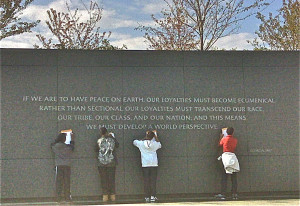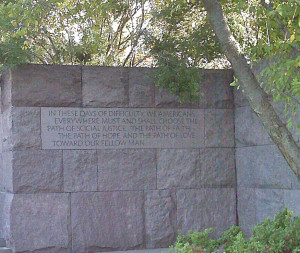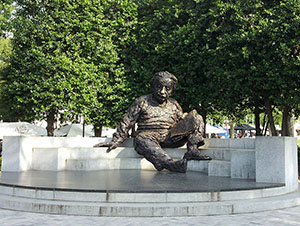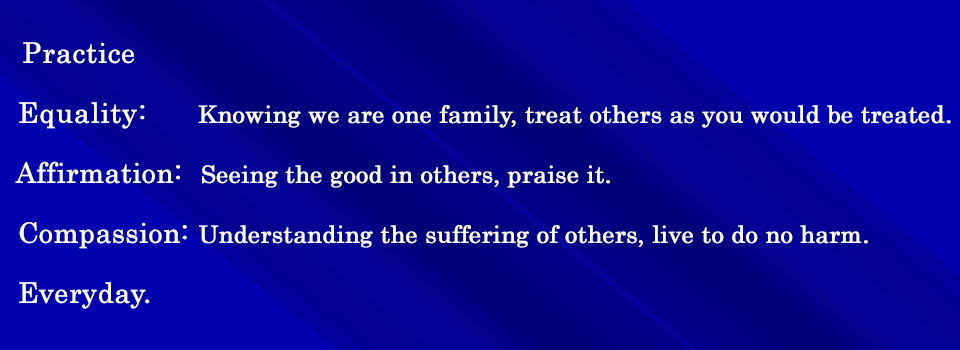Oh Great Spirit of our Ancestors, I raise my pipe to you.
To your messengers the four winds and to Mother Earth who provides for your children,
Give us the wisdom to teach our children to love, to respect, and to be kind to each other so that they may grow with peace in mind.
Let us learn to share all the good things that you provide for us on this Earth.
We hold these truths to be self-evident, that all men are created equal,
that they are endowed by their Creator with certain unalienable Rights,
that among these are Life, Liberty and the pursuit of Happiness.
The Declaration of Independence,
by the unanimous Declaration of the thirteen United States of America
(In Congress, July 4, 1776)
Inform, Inspire, Engage
The American Museum of Peace (AMP) presents a new American narrative, embracing the intention for peace that has been central to the vision of America from the beginning and encouraging a renewed commitment to the universal principles that promote peace.
AMP tells the stories of Americans’ contributions to peace, their vision and their values, emphasizing that peace is not only about opposing war, it is affirming of qualities, attitudes and actions that create peace on a personal, interpersonal, national and global level.
AMP exhibits and programs inform, inspire and encourage us to find opportunities to create greater peace in our lives everyday – for peace is ours to choose. We must choose peace now if we are to create a more perfect union and a more peaceful world.
Government founded on a moral theory,
On a system of universal peace,
On the indefeasible hereditary Rights of Man,
Is now revolving from west to east…
It…promises a new era to the human race.
Thomas Paine (1737 – 1809)
The Rights of Man
AMP and the New American Narrative
The way in which a nation’s story is told – the parts of its history that are repeated, taught to school children and committed to memory – contributes significantly to the self-understanding and shared vision of that nation’s people. If we base our view on the evening news, it might appear that the history of the United States is the history of discord and war. But throughout the history of America, there has been another ever-present and profound dynamic – often overlooked – that promotes peace…..(continue reading)
Ghandi often said, “an eye for an eye leads the whole world blind.” Better to keep our eyes open as we search for more effective means of achieving justice while countering the cycle of violence. At the international level as in intersocial relations, nonviolence provides answers to many of our most pressing questions.
David Cortright
Ghandi and Beyond
Now let me suggest first that if we are to have peace on earth, our loyalties must become ecumenical rather than sectional. Our loyalties must transcend our race, our tribe, our class, and our nation; and this means we must develop a world perspective.
Martin Luther King, Jr.
1967 Christmas Eve Sermon, Ebenezer Baptist Church, Atlanta, GA
Where the preamble declares, that coercion is a departure from the plan of the holy author of our religion, an amendment was proposed by inserting “Jesus Christ,” so that it would read “A departure from the plan of Jesus Christ, the holy author of our religion;” the insertion was rejected by the great majority, in proof that they meant to comprehend, within the mantle of its protection, the Jew and the Gentile, the Christian and Mohammedan, the Hindoo and Infidel of every denomination.”
Thomas Jefferson (1743 – 1826)
Autobiography of Thomas Jefferson
re: the “Virginia Act for Religious Freedom (1786)”
Experience the AMP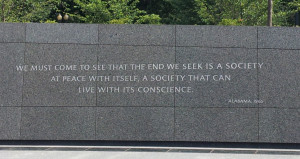
The American Museum of Peace (AMP) will present the often overlooked but profoundly dynamic story of Americans working to promote peace. Here are the stories of Americans who witnessed and labored for peace – some in ongoing ways, others at particular moments in the course of their personal and professional lives.
Here are the stories of American contributions to peace, their vision and their values, for peace is not only about opposing war, it is affirming of qualities, attitudes, actions and lifestyles that create peace on a personal, interpersonal, national and global level.
Staffed by trained professionals, interns and volunteers with a personal commitment to peace, AMP’s constantly evolving multi-media exhibits, activities, workshops, special events and tours will be designed to increase awareness of America’s tradition of peace while engaging visitors of all ages to reflect on the qualities and actions that promote peace.
AMP will use its theaters, stage and conference rooms for hosting seminars, performances, concerts and activities that…(click here to continue reading.)
The release of atomic energy has not created a new problem. It has merely made more urgent the necessity of solving an existing one.
Albert Einstein (1879 – 1955)
Find the Good and Praise It.
Alexander Murphy Palmer (Alex) Haley (1921-1992)
The American Museum of Peace’s posting of a particular phrase or passage from a person or author does not necessarily imply an endorsement of all the views of that person or author.
People are complicated and often their lives and words reflect conflicting values. Sometimes we appear to be in accord with the principles of natural moral law, at other times we do not. No one is perfect. We are encouraged to experience, reflect, learn, grow and inspire ways to become more truly human, as beings who can live harmoniously with each other and serve as good stewards of planet Earth.
We are committed, as author Alex Haley put it, to “Find the good and praise it.”
Even the most laudable people have said things, done things, or lived in ways of which they are not proud. Our purpose is not to seek out the mistakes, but to find the bright moments and inspired principles that informed the actions and periods in people’s lives that reflect the principles of natural moral law on which the United States is founded.
It is AMP’s purpose to find what is good and to let that inspire us to grow and build towards a more perfect union and a more peaceful world.
We are all caught in an inescapable network of mutuality, tied into a single garment of destiny.
Whatever affects one directly, affects all indirectly.
We are made to live together because of the interrelated structure of reality.
Martin Luther King, Jr. (1929 – 1968)
We have a long way to go.
So let us hasten along the road, the road of human tenderness and generosity.
Groping, we may find one another’s hands in the dark.
Emily Green Balch (1867 – 1961)

